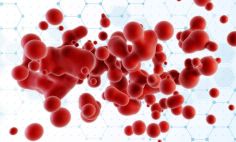We've compiled a list of symptoms, causes, and treatment for deep vein thrombosis and pulmonary embolisms with information from MedlinePlus and the National Heart, Lung, and Blood Institute.
Causes
“Arrhythmias of the heart, certain cancers, sitting for long, uninterrupted periods of time—all are risk factors,” says Andrei Kindzelski, M.D., Ph.D.
Dr. Kindzelski is the program director in the Translational Blood Science and Resources Branch of the National Heart, Lung, and Blood Institute.
During long periods of physical inactivity, exercise can help prevent development of DVT, he noted.
“I’m glad to see certain technologies, like fitness trackers, that monitor your activity and remind you to get up and move around,” he said.
Other causes include:
- A vein’s inner lining is damaged from surgery, serious injuries, inflammation, or immune responses.
- Blood flow is sluggish or slow. Lack of motion can cause slow blood flow. This can happen after surgery, if you’re ill and in bed for a long time, or if you’re sitting on a plane or a long car ride.
- Your blood is thicker or more likely to clot than normal. Some inherited conditions increase the risk of blood clotting. Hormone therapy or birth control pills may also increase the risk of clotting.
Signs and symptoms
Dr. Kindzelski says only about half of the people who have DVT have signs and symptoms. They include:
- Swelling of the leg or along a vein in the leg
- Pain or tenderness in the leg, which you may feel only when standing or walking
- Increased warmth in the area of the leg that’s swollen or painful
- Red or discolored skin on the leg
- Some people aren’t aware of a deep vein clot until they have signs and symptoms of a PE. Signs and symptoms of a PE include:
- Unexplained shortness of breath
- Pain with deep breathing
- Coughing up blood
- Rapid breathing and a fast heart rate
Both DVT and a PE can cause serious or life-threatening problems if not treated.
See your provider right away if you have signs or symptoms of either.
Diagnosis
Your doctor will diagnose DVT based on your medical history, a physical exam, and test results.
He or she will identify your risk factors and rule out other causes of your symptoms. For some people, DVT might not be diagnosed until after they receive emergency treatment for a PE.
Treatment
Doctors treat DVT with medicines and other devices and therapies. The main goals of treating DVT are to:
- Stop the blood clot from getting bigger
- Prevent the blood clot from breaking off and moving to your lungs
- Reduce your chance of having another blood clot
Medicines and treatments include:
Anticoagulants
Anticoagulants are the most common medicines for treating DVT. They’re also known as blood thinners. They decrease your blood’s ability to clot and prevent clot formation in patients at risk for DVT. They stop existing blood clots from getting bigger and help dissolve them to re-establish the blood flow in the affected area.
Thrombin Inhibitors
These medicines interfere with the blood clotting process. They’re used to prevent blood clots in patients who can’t take certain blood thinners.
Thrombolytics
Thrombolytics dissolve large blood clots that cause severe symptoms. Because thrombolytics can cause sudden bleeding, they’re used only in clinically significant situations. Thrombolytics may be administered generally through a vein or using specialized catheters to deliver medication directly where the clot is located.
Vena Cava Filter
If you can’t take blood thinners or they’re not working well, your doctor may recommend a vena cava filter. The filter is inserted inside a large vein called the vena cava. The filter catches blood clots before they travel to the lungs, which may lead to a PE. However, the filter doesn’t stop new blood clots from forming.
Graduated Compression Stockings
Graduated compression stockings can reduce risk of formation of the blood clot and leg swelling. These stockings are worn on the legs from the arch of the foot to just above or below the knee. They are tight on the ankle and become looser as they go up the leg. This creates gentle pressure up the leg. The pressure keeps blood from pooling and clotting.







